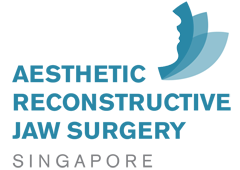Share this
Is corrective jaw surgery painful?
on March 24, 2016

Pain is one of the pain concerns of patients contemplating surgery. The International Association for the Study of Pain defines pain as “An unpleasant sensory and emotional experience associated with actual or potential tissue damage, or described in terms of such damage.” However, we don’t need an association to tell us what pain is. Everybody knows what it is. Pain is often a symptom that tells us that something is wrong and that prompts us to find out what caused it. With experience we model our behavior to avoid or minimize pain. So, why do people choose to undergo elective surgeries such as corrective jaw surgery? Breaking of bones seems like a rather painful thing to do. So, how painful is it?
Most surgeons get feedback from their patients and over time, will have a pretty good idea how to describe the potential postoperative pain to their patients. A rare few may have had undergone corrective jaw surgery themselves and are probably in the best position to tell their patients how painful it is or is not. While I have not undergone corrective jaw surgery myself, I recently sustained a fall and fractured my lower jaw. So I do have some kind of personal experience with jaw breaking.
This personal experience confirms what I have been telling my patients all this years. A fractured jaw is not really that painful. Sure, at the time of the fracture, there is some pain felt. However, I did not even need any painkiller at all. On a scale of one to ten, at worst, I would grade the pain at two, and that’s when I tried to open my mouth and moved the fractured parts.
Similarly, most of my patients who underwent corrective jaw surgery seldom complain of much pain after the surgery. There is always some degree of discomfort but it is largely bearable. Most patients do not even need painkillers by the time they are discharged.
Nevertheless, a pain management regime is always practiced. Pain is not just a physical sensation but an emotional one as well. I had a patient who would jump and scream the moment an instrument like a retractor even touches her… before any surgery is done. Different patients have different pain threshold and there is no way of determining who has a high threshold and who has a low threshold. As such, I would normally err on the side of caution and treat every patient as having a low pain threshold.
During the surgery, even though the patient is already under general anesthesia, I would inject a local anesthetic. This has the effect of minimizing bleeding during the surgery due to the adrenaline in the local anesthetic. It also has the effect of numbing the operated areas for a few hours after the patient wakes up from the general anesthetic. Upon completion of the surgery and before the general anesthetic is reversed, a suppository painkiller, usually a non-steriodal anti-inflammatory, is usually given. This will reduce the need to take oral painkillers postoperatively as swallowing is usually difficult in the first few hours post surgery. In the first 24 hours, intravenous fluids are given and a narcotic painkiller such as pethidine is usually added to the drip, given a continuous source of analgesic for the first night. Pethidine is not given for all patients as it can cause nausea and vomiting. In cases where the jaws are temporarily tied together with elastics or wires, I usually do not use a narcotic painkiller to avoid the risk of aspiration if the patient vomits. Dexamethasone, a steroid, is also given intravenously for the first two days. This reduces the degree of swelling and helps with pain management as well.
When the patient is discharged from the hospital, a non-steriodal ant-inflammatory is usually prescribed for regular consumption and an additional mild narcotic analgesic on a when necessary basis. With this pain management protocol, the vast majority of jaw surgery patients are kept relatively pain-free.
However, it is not a one-size-fit-all protocol as different patients have different pain thresholds and different responses. We start off with a protocol and titrate it to suit the patient.

Share this
- Jaw Surgery (93)
- Dental Implants Singapore (90)
- Orthognathic Surgery (48)
- Replacing Missing Teeth (26)
- Missing Teeth Options (23)
- Underbite (23)
- Bone Grafting (21)
- Costs (18)
- Facial Aesthetics (18)
- Aesthetics (17)
- dental implants (16)
- corrective jaw surgery (15)
- BOTOX (11)
- Dermal Fillers (11)
- Wisdom teeth (10)
- Fixed Implant Dentures (8)
- Loose Dentures Singapore (6)
- Medisave (6)
- sleep apnea (6)
- Braces (5)
- Dental Pain (5)
- Dentures in Singapore (5)
- Loose Teeth (5)
- Tooth Extraction (5)
- jaw deformities (5)
- bimax (4)
- bone graft (4)
- maxillomandibular advancement (4)
- all-on-4 (3)
- bimaxillary protrusion (3)
- chin implant (3)
- facial asymmetry (3)
- full mouth dental implants (3)
- genioplasty (3)
- immediate implant (3)
- removal of an integrated dental implant (3)
- third molars (3)
- wisdom tooth surgery (3)
- My Dentures Don't Fit (2)
- VME (2)
- bone graft healing (2)
- distraction osteogenesis (2)
- medical tourism (2)
- obstructive sleep apnea (2)
- orthodontics (2)
- plastic surgery (2)
- CT guided dental implants (1)
- Double jaw surgery (1)
- Invisalign (1)
- Periodontal Disease (1)
- Permanent Dentures Singapore (1)
- before and after photos (1)
- facial trauma (1)
- fractured dental implant (1)
- oral appliance therapy (1)
- root canal treatment (1)
- veneers (1)
- vertical maxillary excess (1)
- September 2019 (2)
- July 2019 (2)
- May 2019 (2)
- August 2018 (1)
- October 2017 (1)
- September 2017 (2)
- August 2017 (1)
- June 2017 (2)
- May 2017 (4)
- April 2017 (1)
- March 2017 (1)
- February 2017 (3)
- January 2017 (3)
- December 2016 (1)
- November 2016 (2)
- October 2016 (4)
- September 2016 (9)
- August 2016 (5)
- July 2016 (11)
- June 2016 (14)
- May 2016 (6)
- April 2016 (2)
- March 2016 (1)
- January 2016 (7)
- December 2015 (10)
- November 2015 (4)
- October 2015 (9)
- September 2015 (7)
- August 2015 (1)
- July 2015 (6)
- June 2015 (3)
- May 2015 (7)
- April 2015 (5)
- March 2015 (8)
- January 2015 (5)
- December 2014 (7)
- November 2014 (7)
- October 2014 (6)
- September 2014 (8)
- August 2014 (5)
- July 2014 (7)
- June 2014 (8)
- May 2014 (9)
- April 2014 (10)
- March 2014 (6)
- February 2014 (8)
- January 2014 (3)
Subscribe by email
Email subscription



Comments (1)